Introduction
One of the simplest yet most essential tools in any kitchen, the humble tea kettle has stood the test of time as a reliable and efficient solution for heating water to brew your delicious cup of tea. But, How does a tea kettle work?
But have you ever wondered exactly how this crucial appliance works? In today’s post, we will unravel the science behind these boiling wonders while exploring their different types and offering valuable tips to make your tea experience even better.
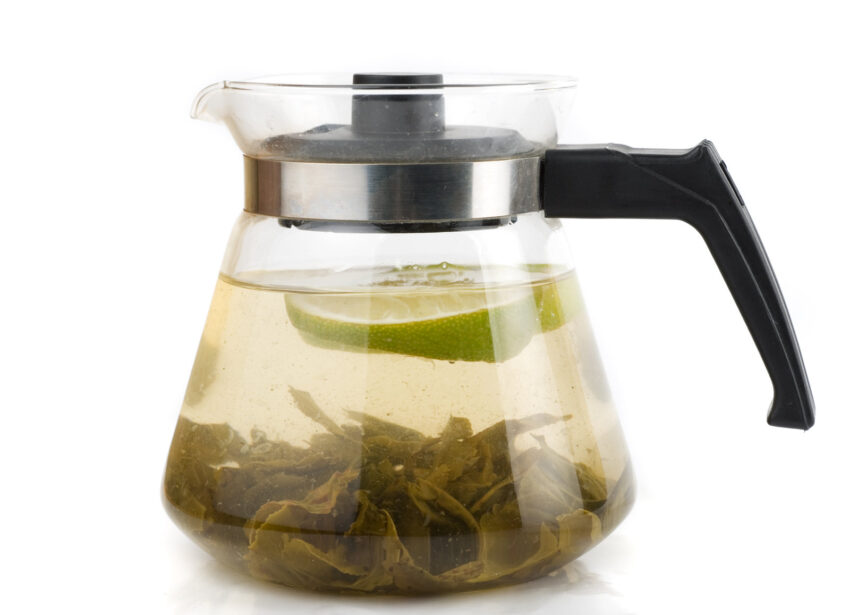
Key Takeaways
- Tea kettles work by using conductive, convective, and radiant heat transfer to efficiently heat water through the key components of kettles such as heating elements and spouts.
- There are different types of tea kettles available including stovetop, electric, glass, and whistling kettles that offer unique features for brewing that perfect cup of tea.
- Proper use and maintenance of your kettle are crucial for safety reasons. Follow guidelines on filling the kettle with clean water, monitoring the boiling process closely, and controlling pouring over a desired temperature range or time limit before removing from the heat in order not to cause damage or injure yourself.
- With a little knowledge in hand about how tea kettles work together with patience and experimentation you can quickly become one step closer to enjoying delicious homemade tea!
how does a tea kettle work?Understanding The Science
Tea kettles work by using conductive, convective, and radiant heat transfer to heat water through the key components of kettles such as heating elements and spouts.
Key Components Of Tea Kettles
Tea kettles have several essential components that work together to efficiently heat and boil water. These include:
- Body: The main part of the kettle, typically made from materials like stainless steel, copper, or glass, can withstand high temperatures and effectively conduct heat.
- Handle: heat-resistant handles provide a comfortable grip for users to safely pour hot water.
- Spout: Designed for easy pouring, the spout directs the heated water from the kettle into your teapot or cup.
- Lid: Seals the top of the kettle to help maintain pressure and prevent steam from escaping during heating.
- Heat Source Compatibility: Stovetop kettles require compatibility with gas, electric, or induction stoves, while electric kettles have built-in coil heating elements.
- Whistle Alert Mechanism: Found in whistling kettles, this device emits a sound when steam passes through it, indicating that the water has reached boiling point.
- Temperature Control: Some electric kettles come equipped with variable temperature controls for precise heating and optimal tea brewing results.
- Automatic Shutoff Feature: Ensures safety by automatically turning off the heat source once the water reaches its boiling point or if the kettle is empty.
- Infuser Basket (Optional): A removable component found in some tea kettles designed to hold loose-leaf tea during the steeping process.
- Electric Base (Electric Kettles Only): Provides a stable platform for electric kettles to sit on and houses the electrical connection for powering the kettle’s heating element.
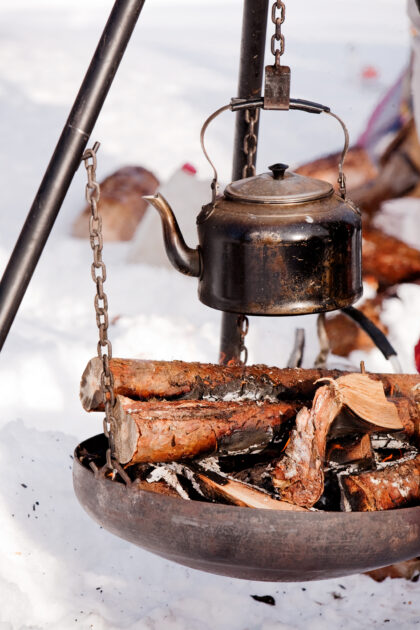
Conductive, Convective, And Radiant Heat Transfer
Tea kettles rely on three principles of heat transfer to boil water: conductive, convective, and radiant. Conductive heat transfer occurs when the kettle comes in contact with a heat source like a hot plate or gas stove.
The metal of the kettle absorbs this heat and transfers it to the water inside. Convective heat transfer happens as water molecules at the bottom of the kettle are heated up, they become less dense and rise towards the surface while cooler water descends.
Finally, radiant heat is involved because not all parts of the kettle come into direct contact with fire or heating elements such as electric coils – some areas receive radiant energy which gets absorbed by metallic surfaces where it heats them thus contributing to boiling time reduction.
By understanding how tea kettles work, you can make better decisions when choosing one for your home use.
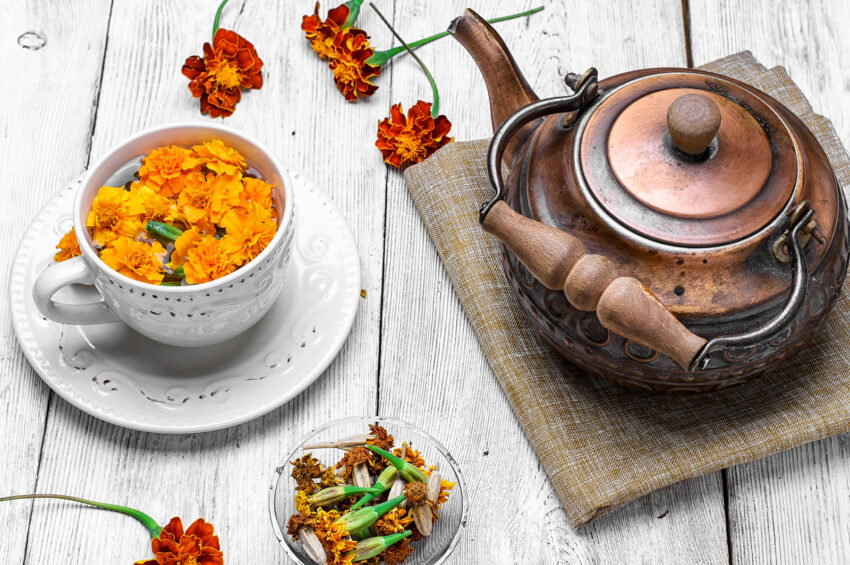
Different Types Of Kettles
There are various types of tea kettles available for brewing that perfect cup of tea such as traditional stovetop kettles, electric kettles, glass kettles, and whistling kettles. It’s a personal preference for the tea drinker.
Traditional Stovetop Kettles
Stovetop tea kettles are the most classic and traditional kettles. They are usually made of metal, such as stainless steel or copper, and can be heated on any stovetop surface.
These kettles work by conducting heat from the stovetop burner into the water inside them. The heating process is gradual but steady, allowing for efficient boiling without overcooking the water.
Stovetop kettles come in various sizes and shapes to fit every kitchen décor, from sleek modern designs to vintage-inspired models. They are a popular and good choice for tea enthusiasts who value tradition and authenticity when brewing their favorite beverage.

Electric Kettles
Electric tea kettles have become a popular household appliance for their efficiency and convenience. With the ability to boil water in just a few minutes, they add heat energy to the water more quickly than other methods.
One of the greatest advantages of an electric kettle over traditional stovetop kettles is its rapid boiling time. Some models can bring water to boiling temperatures in less than 2 minutes, which makes them the best option for making tea or coffee on busy mornings. They now have cordless electric kettles but make sure they have an automatic shutoff safety feature.
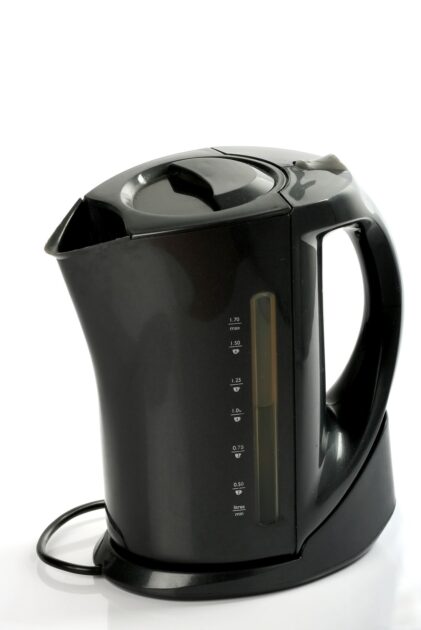
Glass Kettles
Glass kettles are becoming increasingly popular due to their elegant design and the fact that they allow you to watch the water boil. These kettles are usually made of tempered glass, which is a strong and durable material resistant to high temperatures.
One potential downside of glass kettles is that they are more fragile than other kettle types and can be susceptible to cracking or shattering if dropped or mishandled.
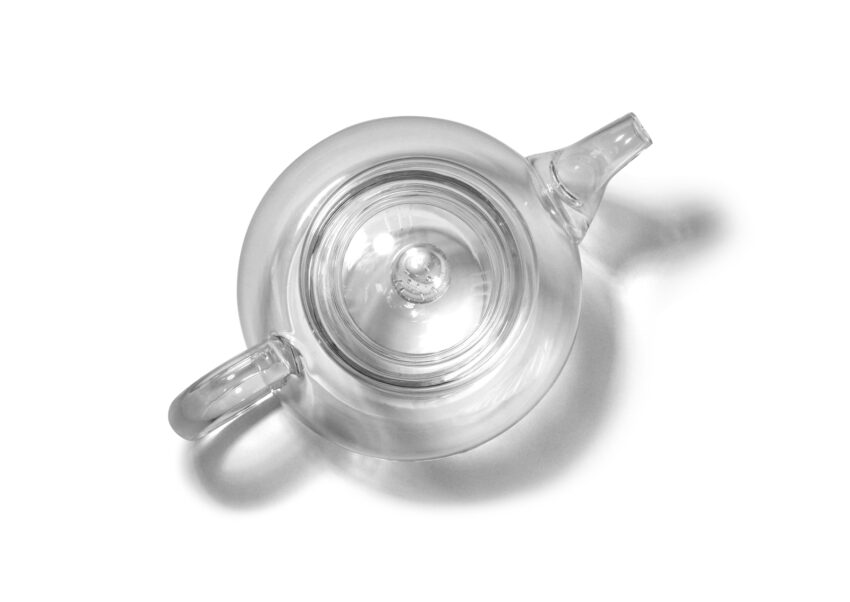
Whistling Kettles
A whistling tea kettle is a type of stovetop kettle that has a device that emits a whistling sound to know the right time to turn off the burner when the water boils. Steam passing through the device triggers the whistle sound, alerting you that your water is ready for tea brewing or other uses.
Whistling kettles come in various designs and materials such as stainless steel, copper, or enamel-coated metals.
One great benefit of whistling kettles is knowing when your water has reached boiling point even if you’re not near the stove. This feature ensures safety from overheating and saves energy by preventing unnecessary over-boiling.
They also offer precise temperature regulation compared to electric kettles which can heat water more quickly but may lack precision temperature control for delicate teas like loose-leaf tea, which require lower temperatures than black tea bags.
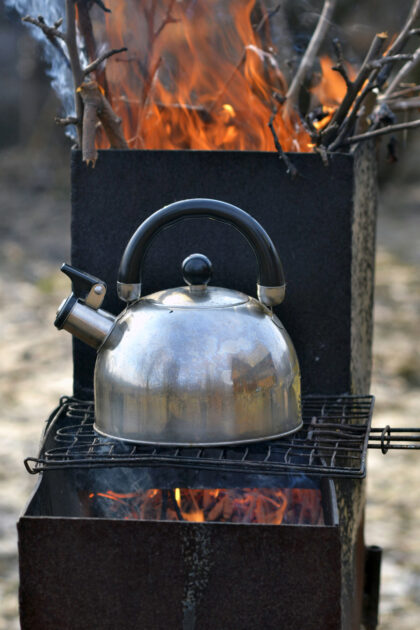
Step-by-Step Guide On Using A Tea Kettle
To use a tea kettle, start by filling it up with the desired amount of water and placing it on a heat source (such as a stove or electric heating plate). Next, turn on the heat source to begin heating the water until it reaches boiling point.
During this process, keep an eye on the kettle and listen for any whistling sounds if using a whistling kettle.
Filling The Kettle
To fill the kettle, first, make sure it’s clean and free of any residue. Then locate the spout and lift the lid. Using a faucet or pitcher, slowly pour cold water into the kettle through the spout until it reaches its maximum level line.
It’s important to note that what type of water you use will affect your tea brewing experience. For example, using hard water with high mineral content can leave behind an unpleasant taste in your cup of tea.
On the other hand, distilled and purified water may be too pure for flavorful teas like black tea which rely on minerals in the water for depth of flavor.
Heating The Water
Tea kettles are primarily used to heat water for tea and other hot beverages. The process of heating the water is simple yet crucial in achieving that perfect cup of tea.
Once your kettle is filled with the desired amount of water, it’s time to turn up the heat! Depending on the type of kettle you have, there are a variety of ways to do this.
Traditional stovetop kettles need to be placed on a stove burner where they absorb the heat from the fire or electric coil. Electric kettles utilize a built-in heating element that rapidly heats the water, so you don’t even need to use a stove! Regardless of which method you choose, make sure to pay close attention as boiling times can vary depending on factors like altitude and how much water is in your kettle.
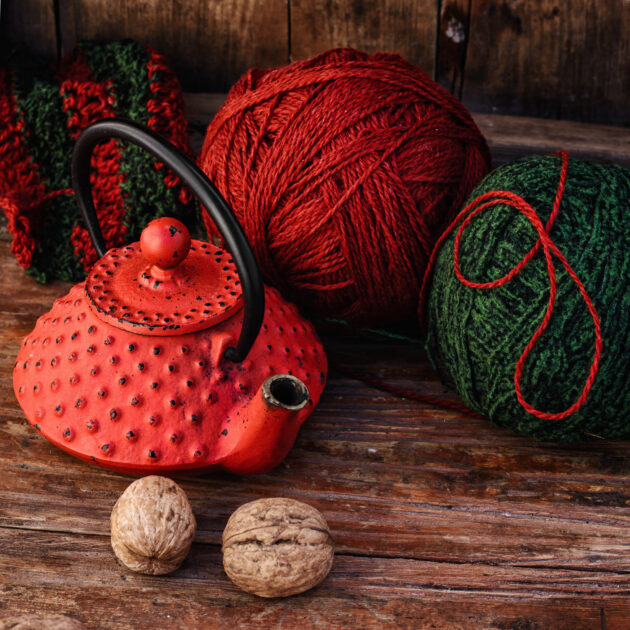
Monitoring The Boiling Process
To ensure the water is heated to the desired temperature, it’s important to monitor the boiling process carefully. Keep an eye on the kettle as it heats up, watching for steam coming out of the spout and bubbles forming within the chamber. For a whistling tea kettle, listen for the whistling sound to know the right time to turn off the burner.
It’s also important not to overheat the water temperature, which can cause damage to both your kettle and any delicate teas. If you’re unsure about when to remove from heat, use a thermometer or watch for small bubbles forming at around 160°F (71°C) for white and green teas or larger bubbles at around 205°F (96°C) for black teas.
Remember that different types of kettles and heating sources may have different boiling times and temperatures due to factors such as thermal conductivity and pressure buildup.
Pouring The Water
After monitoring the boiling process, it’s time to pour the hot water from the tea kettle. The spout design of a tea kettle is often crucial in achieving a precise and controlled pour.
Some kettles have thin elongated spouts that can produce a slow and steady stream of hot water ideal for precision brewing methods like pour-over coffee or loose-leaf tea.
When pouring, ensure to aim the stream directly at your teapot or cup to avoid splashing hot water. Additionally, make sure not to overfill your cup or teapot as this may cause spillage and waste precious water.
Using a tea kettle might sound simple enough; however, getting that perfect cup requires attention to detail and technique when pouring so you don’t lose any heat energy generated during boiling into colder air around you.
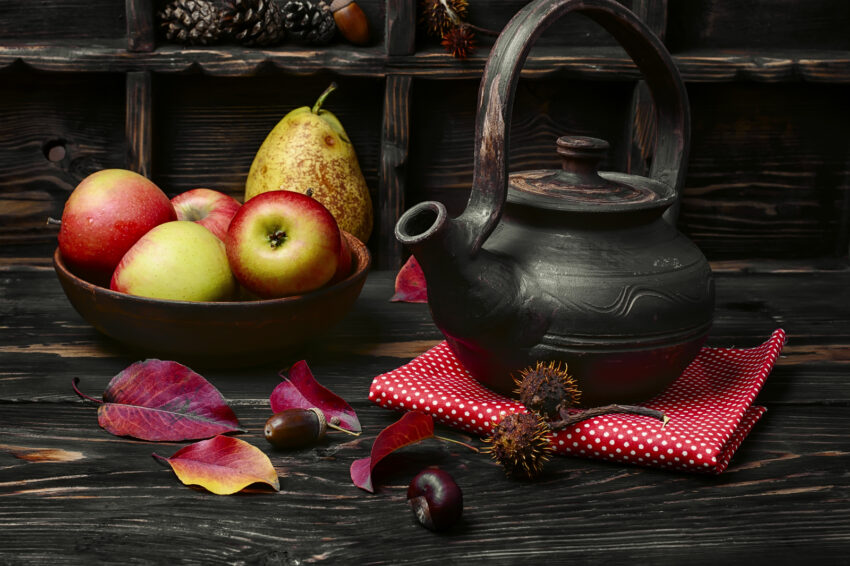
Tips For Using And Maintaining A Tea Kettle
To ensure your tea kettle is always ready for use, choose the right size and material, clean it regularly, take safety precautions, and save energy by turning off the heating source when the water has boiled.
Choosing The Right Size And Material
When selecting a tea kettle, it’s important to consider the size and material of the kettle. The size of your kettle should be based on how much water you’ll need for your typical cup or pot of tea.
The material of the kettle can also make a difference in taste and performance. Stainless steel kettles are durable and easy to clean but may transfer heat less evenly than other materials such as copper or aluminum.
It’s also essential to consider whether you want an electric or stovetop kettle.
No matter what size or material you choose, cleaning and maintenance are crucial in maintaining the longevity of your tea kettle.
Cleaning And Maintenance
Cleaning and maintaining your tea kettle is important to ensure it functions properly and lasts a long time. Here are some tips:
- Regularly clean the inside of the kettle with warm water and soap to remove any buildup or residue.
- For particularly stubborn stains, boil a mixture of water and vinegar in the kettle, then let it cool and rinse thoroughly.
- Wipe down the exterior of the kettle with a soft cloth or sponge to remove any dirt or grime.
- Make sure to dry the kettle completely after washing, as leaving it wet can cause rust or other damage over time.
- If your tea kettle has an infuser basket, be sure to remove it before cleaning to ensure that all parts of the kettle are thoroughly cleaned.
- Check for any cracks, rust, or damage regularly and replace the kettle if necessary.
- When storing your tea kettle, make sure it is completely dry and stored in a cool dry place away from direct sunlight.
Keeping your tea kettle clean and well-maintained not only ensures that your water is boiled cleanly but also prolongs its usability for years to come.
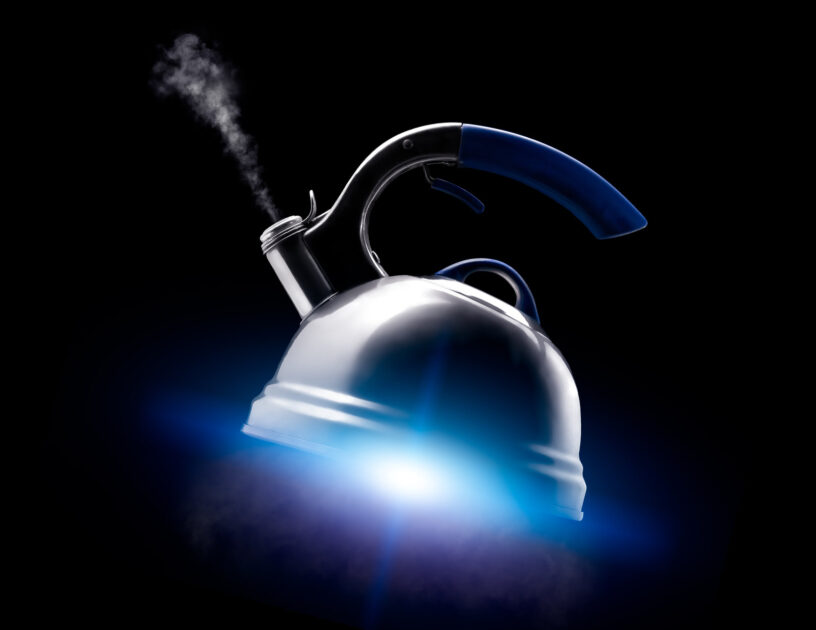
Safety Precautions
Safety is paramount when it comes to using tea kettles. Here are a few safety precautions to keep in mind:
- Always use the kettle on a stable and level surface.
- Keep the kettle away from flammable objects, such as curtains and paper towels.
- Be careful when pouring boiling water, and avoid splashing or spilling.
- Never overfill the kettle past its maximum capacity line.
- Use oven mitts or pot holders to handle hot kettles.
- Make sure the lid is properly secured before heating the water.
- When using an electric kettle, always unplug it when not in use and never immerse it in water.
- Regularly clean the kettle to prevent the build-up of mineral deposits that can affect its performance and safety.
By following these simple safety precautions, you can enjoy your cup of tea without any accidents or mishaps.
Saving Energy
When it comes to using a tea kettle, some simple tricks can help you save energy. First of all, make sure you choose the right size for your needs – this will ensure that you’re not boiling more water than necessary and wasting electricity or gas.
Additionally, consider using an electric kettle instead of a stovetop one. Electric kettles are generally more energy-efficient because they heat up water faster and have automatic shut-off features once the water reaches boiling point.
And if you’re looking to cut back on your energy usage, try placing your teapot directly onto the stove burner instead of heating extra-hot water in a separate kettle first.
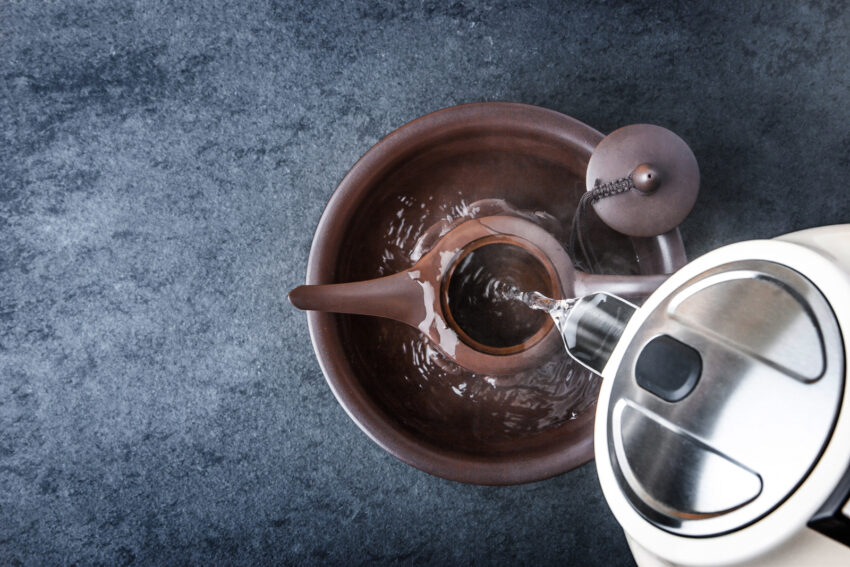
FAQs:
1. How does a tea kettle work?
A tea kettle works by heating water over a heat source, typically on the stove or electric element, until it reaches its boiling point. The steam generated from the boiling water is then used to whistle or indicate that the water is ready for use.
2. Are there different types of tea kettles available in the market?
Yes, there are several different types of tea kettles available in the market such as traditional stove-top models made of stainless steel or copper, modern glass electric models with adjustable temperature controls, and even portable travel versions designed for brewing your favorite cup anywhere you go.
3. What factors should I consider when selecting a tea kettle?
When choosing a suitable teapot, factors like material composition (i.e., stainless steel vs aluminum), durability & longevity along with safety features such as non-slip handle grips and automatic shut-off functions should be considered carefully especially if young children will also be using it.
4. Can I use my tea kettle to boil other liquids besides water?
Yes, many individuals use their kettles for not only heating but also boiling soups and broths making them particularly versatile kitchen tools worth considering purchasing given their usefulness beyond just brewing teas alone!
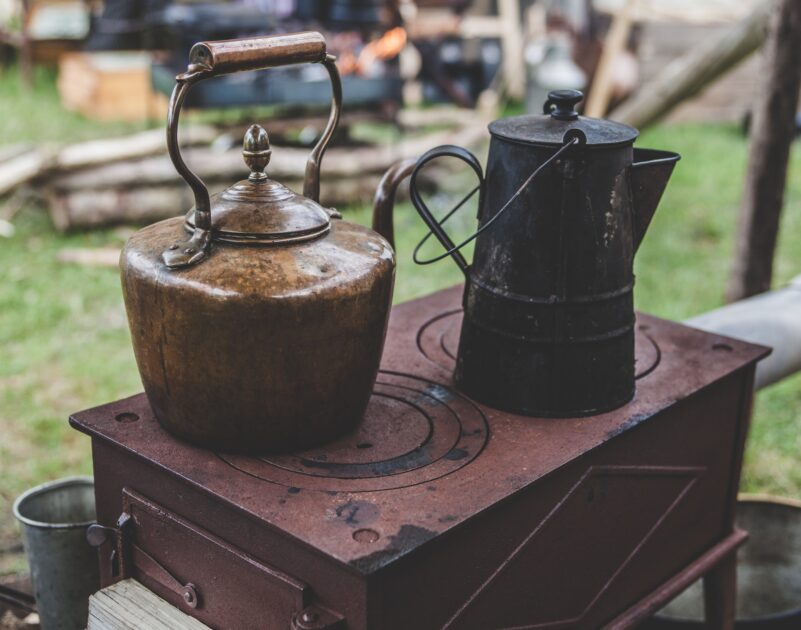
Conclusion
In summary, tea kettles work by heating water using different heat transfer methods such as conductive, convective, and radiant. There are various types of tea kettles available including stovetop, electric, glass, and whistling kettles.
Using a tea kettle is a simple process that involves filling the kettle with water, heating it, and pouring the hot water over your favorite loose-leaf or bagged tea. Maintaining your kettle is important for both safety and performance reasons so be sure to follow proper cleaning guidelines.
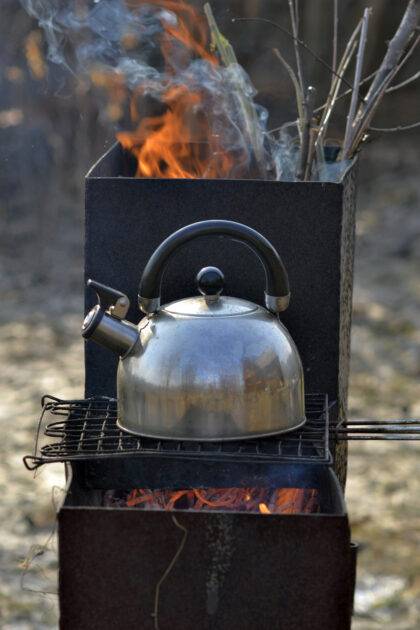
Pingback: The Best Copper Tea Kettles: Take Our Advice! -